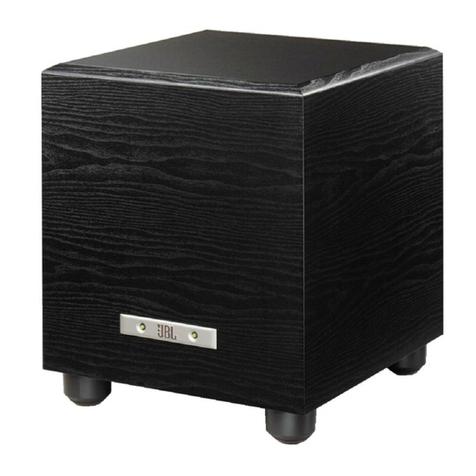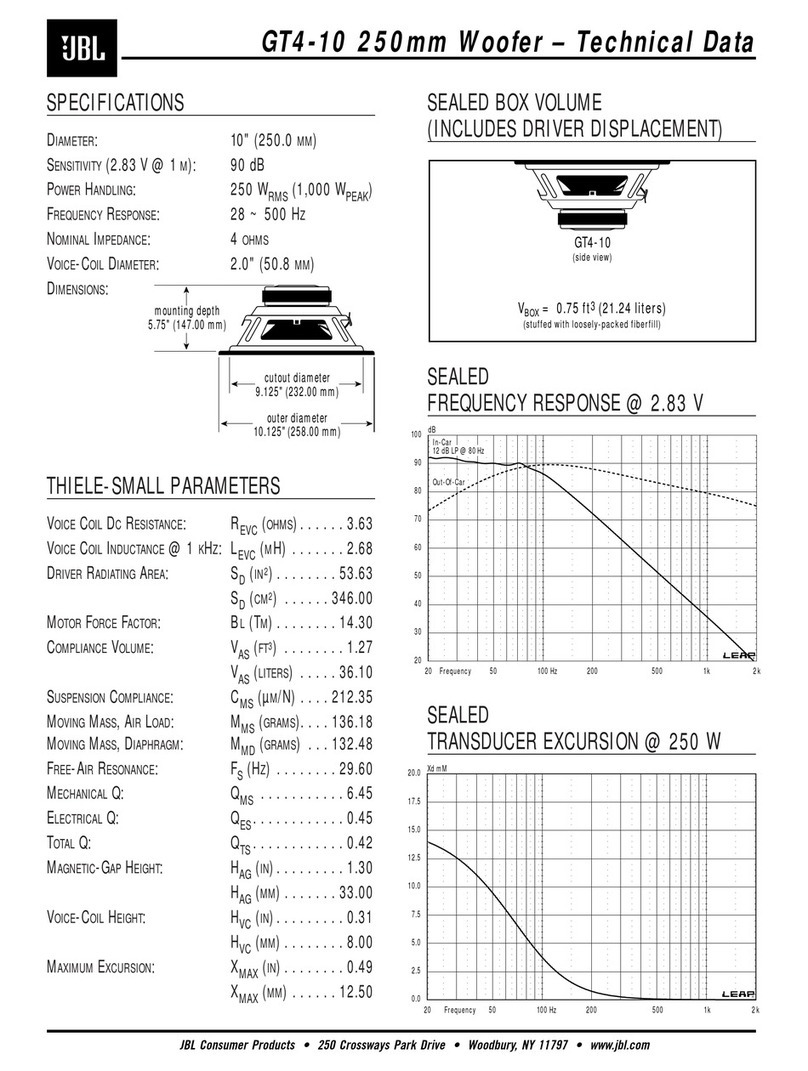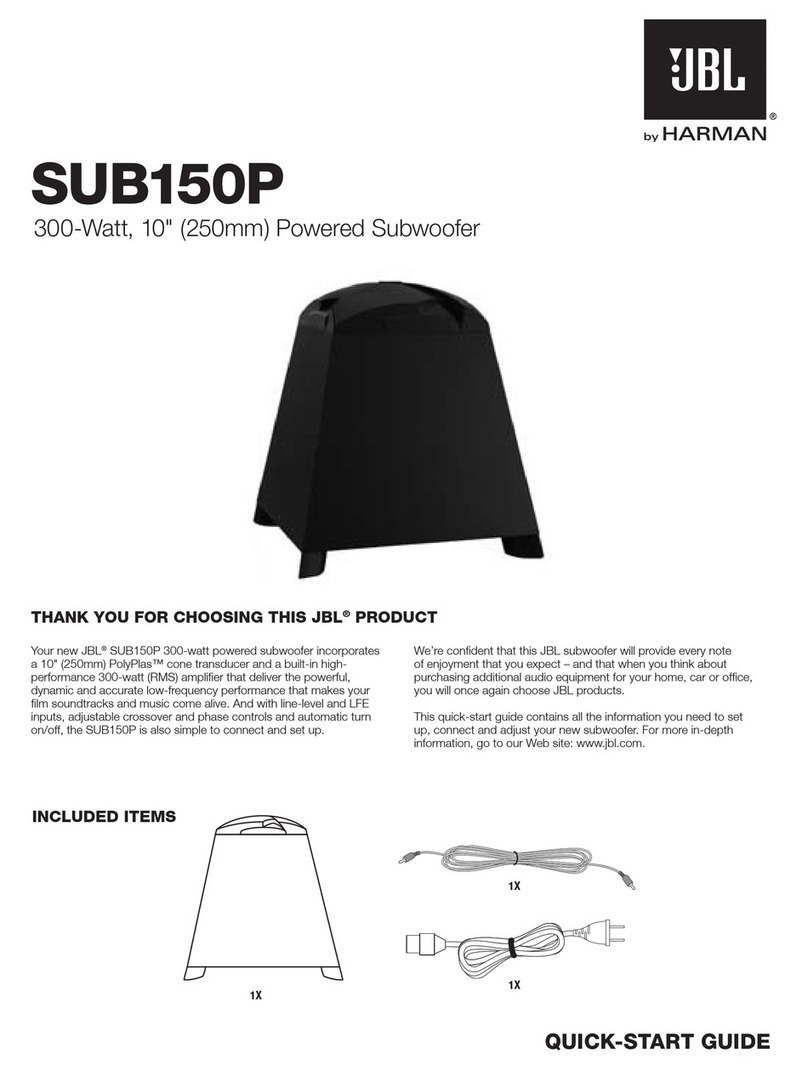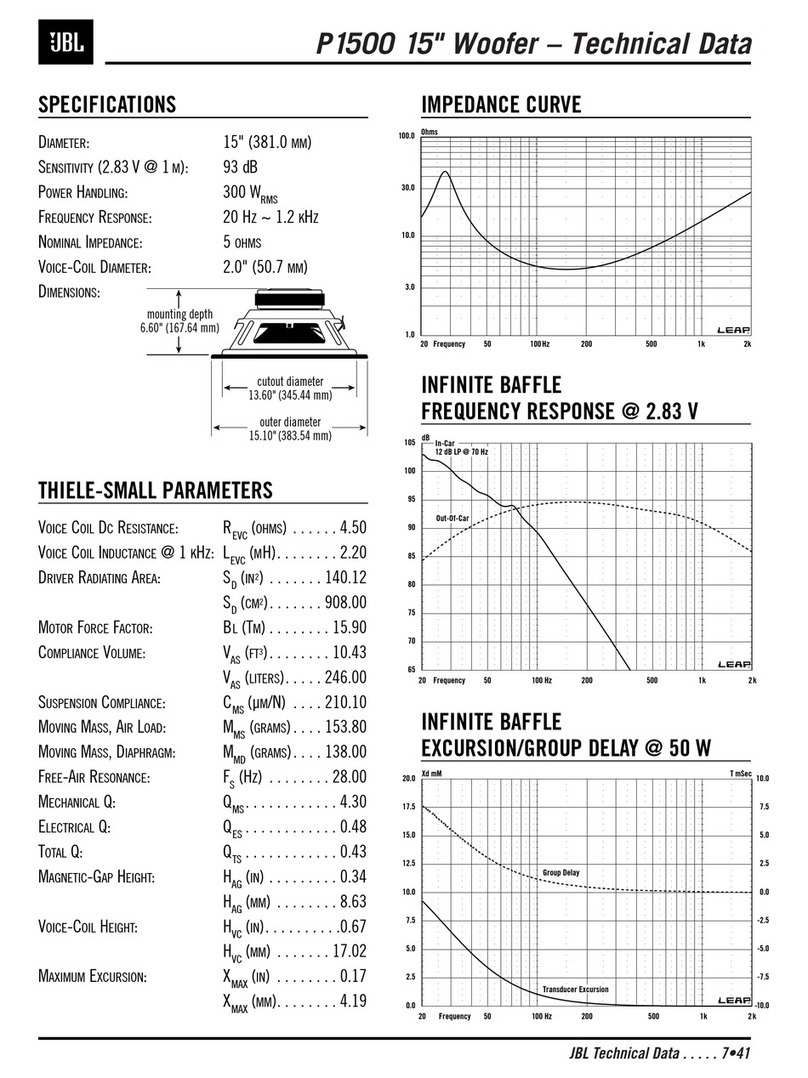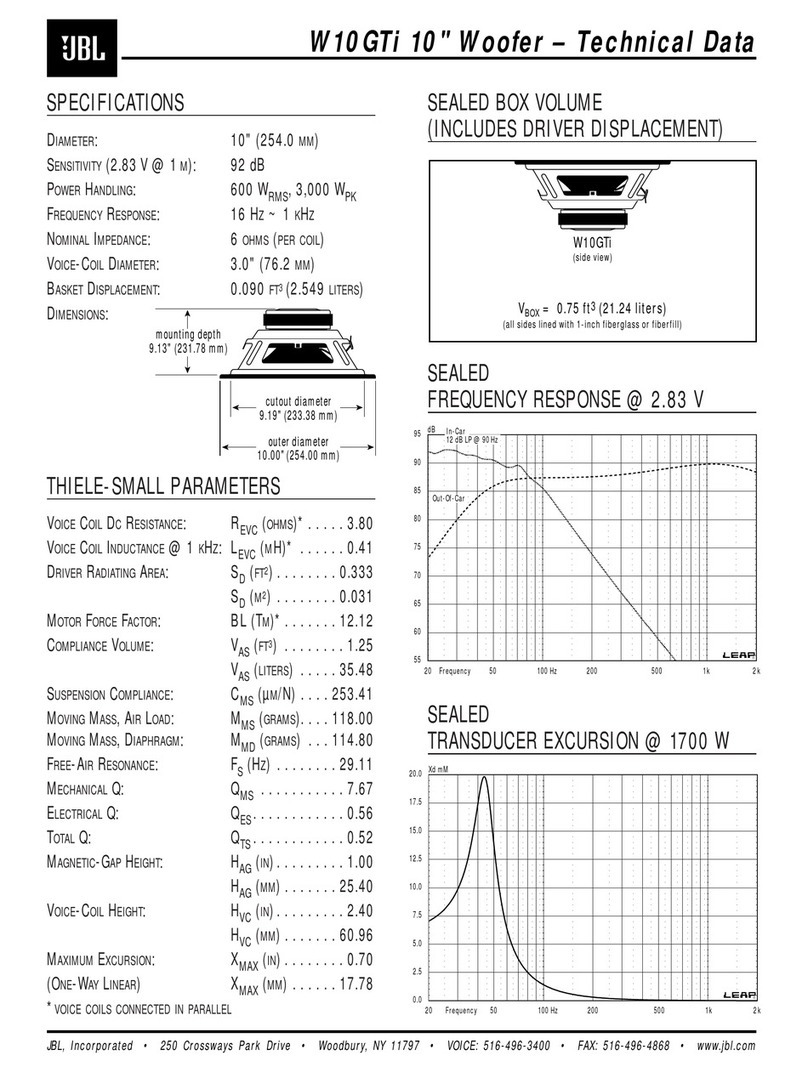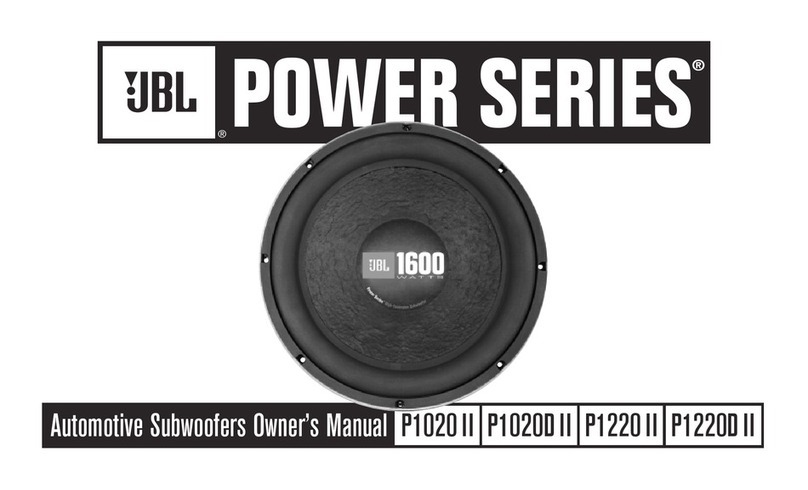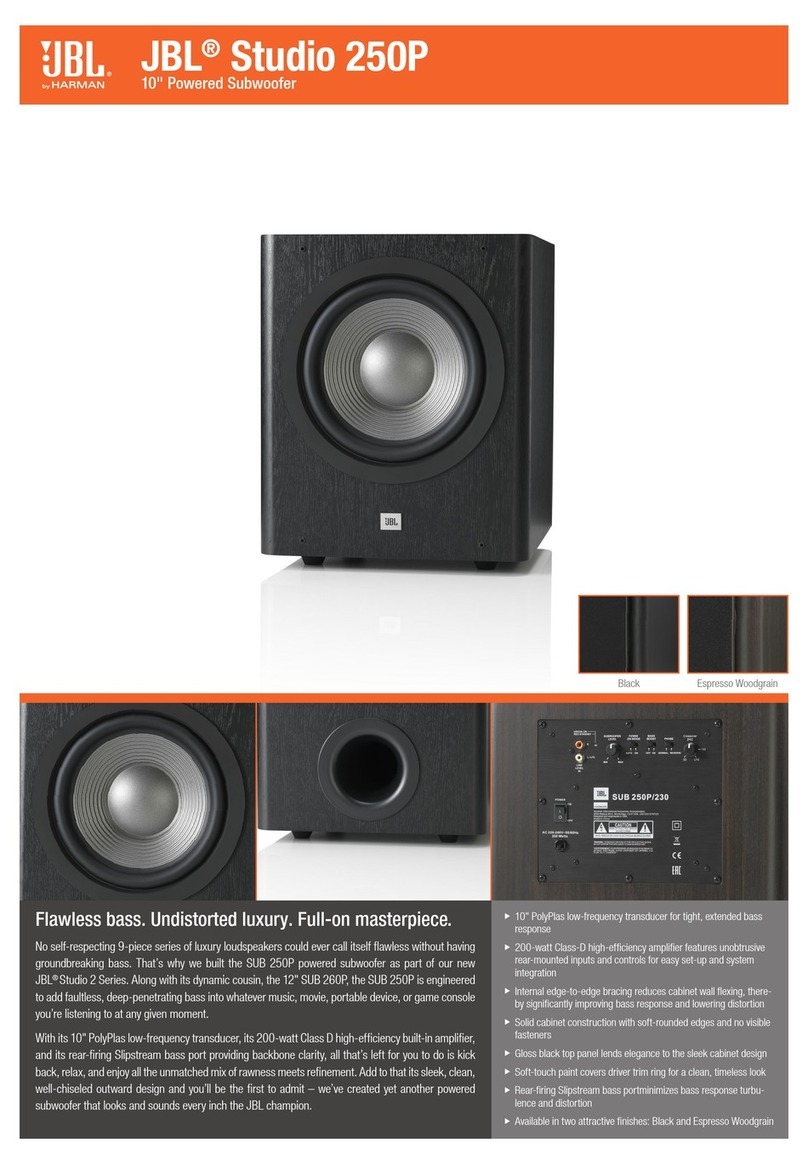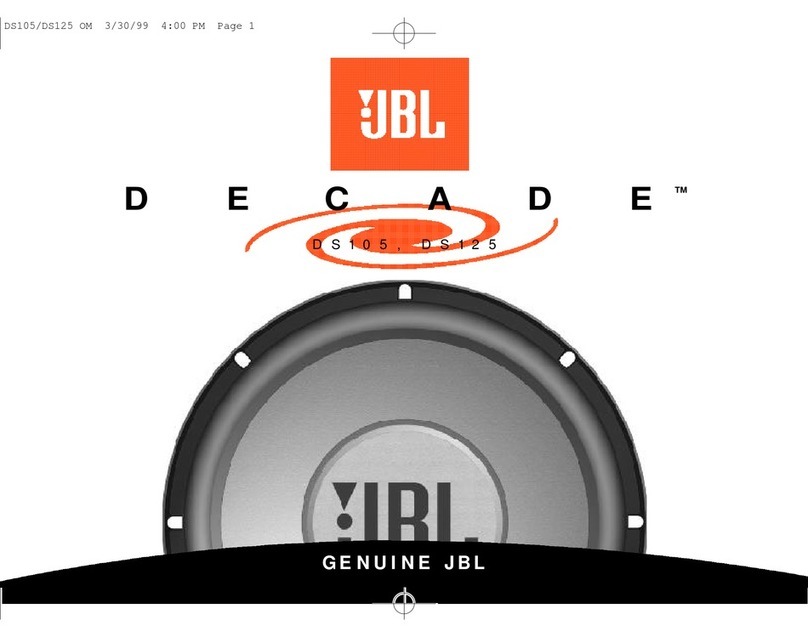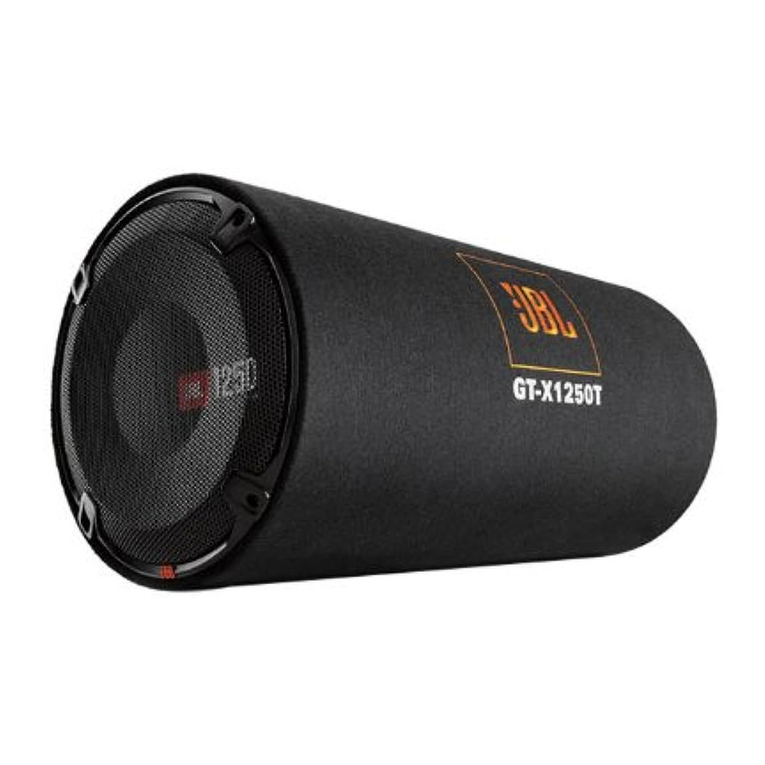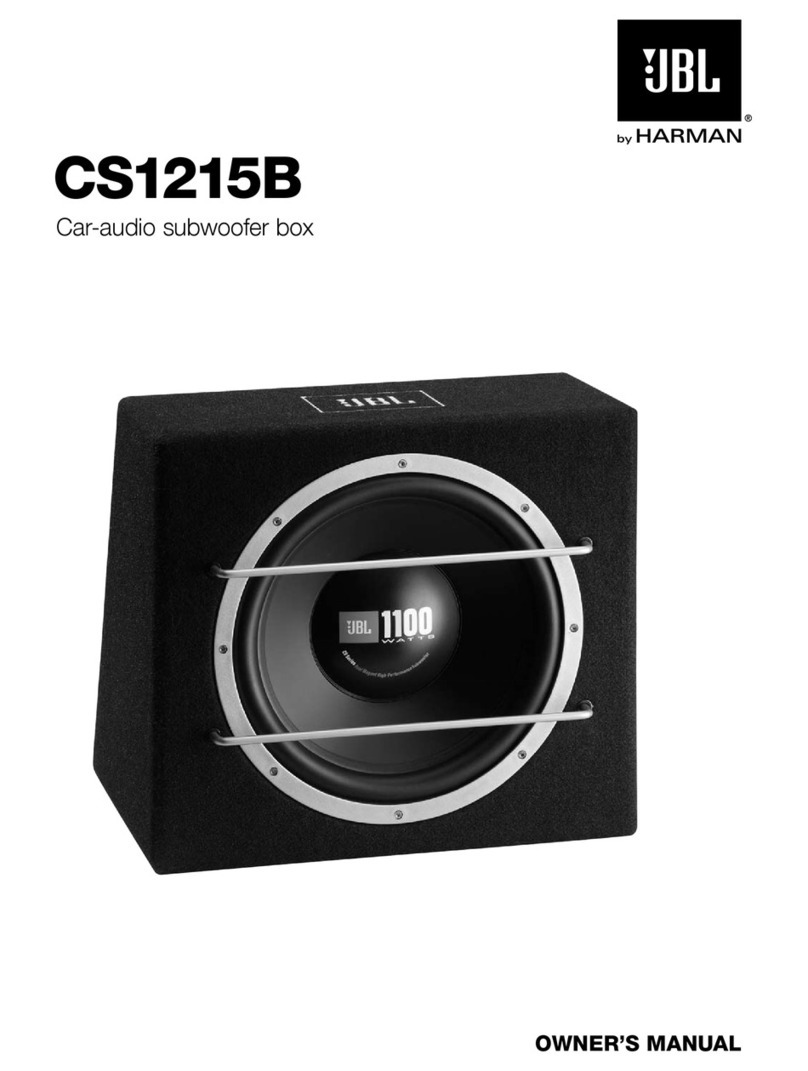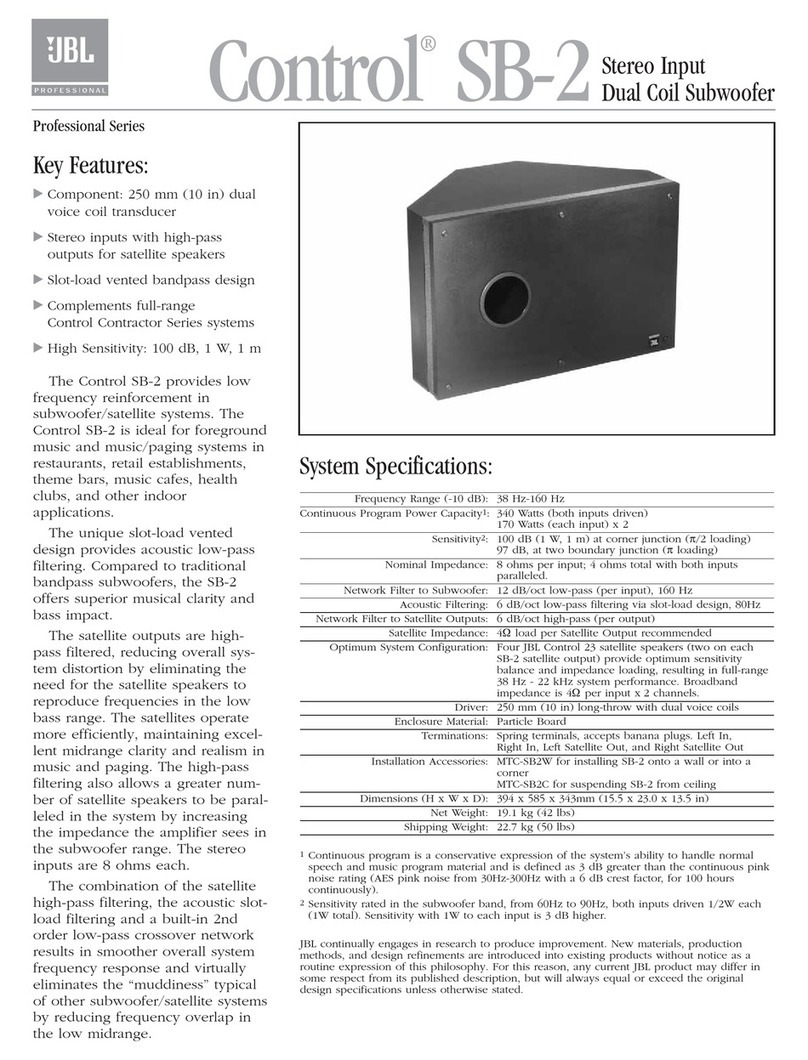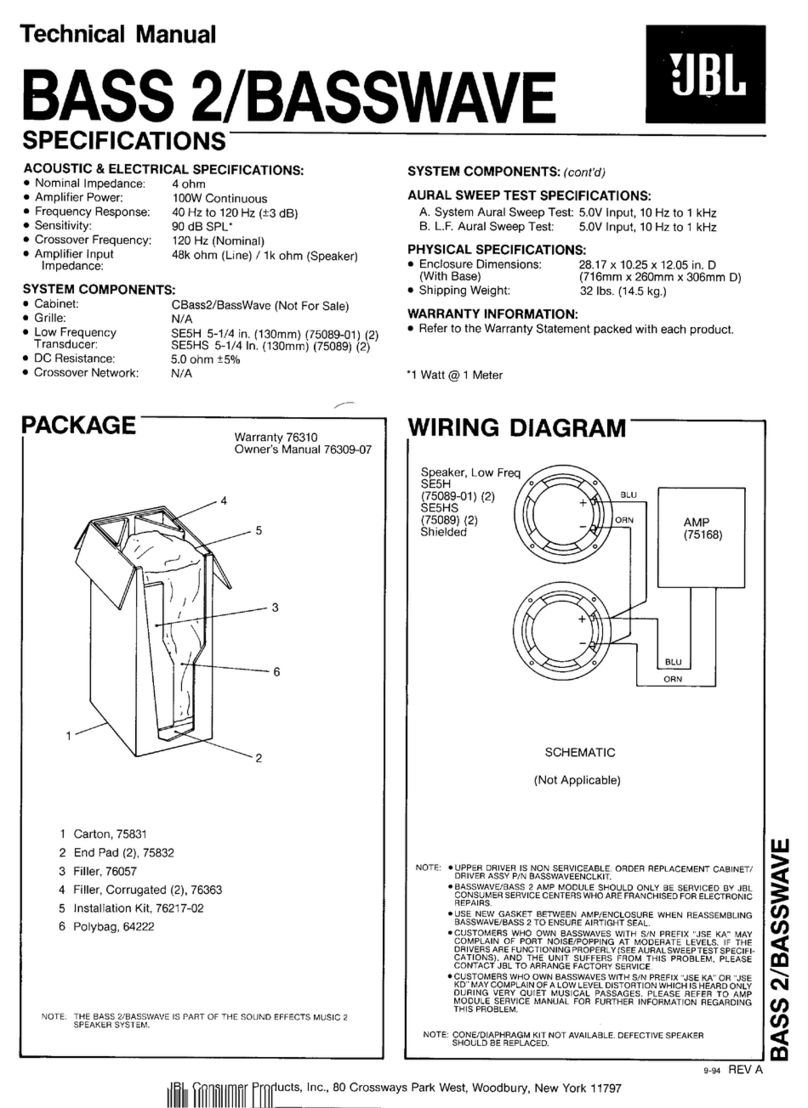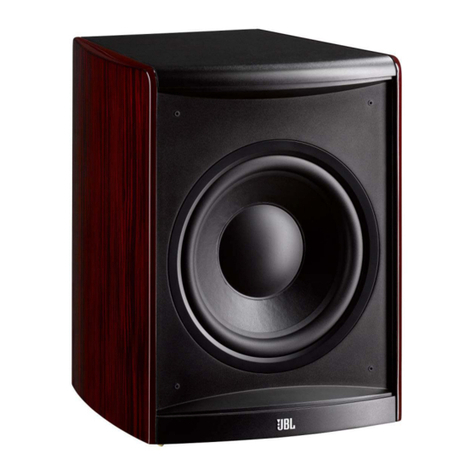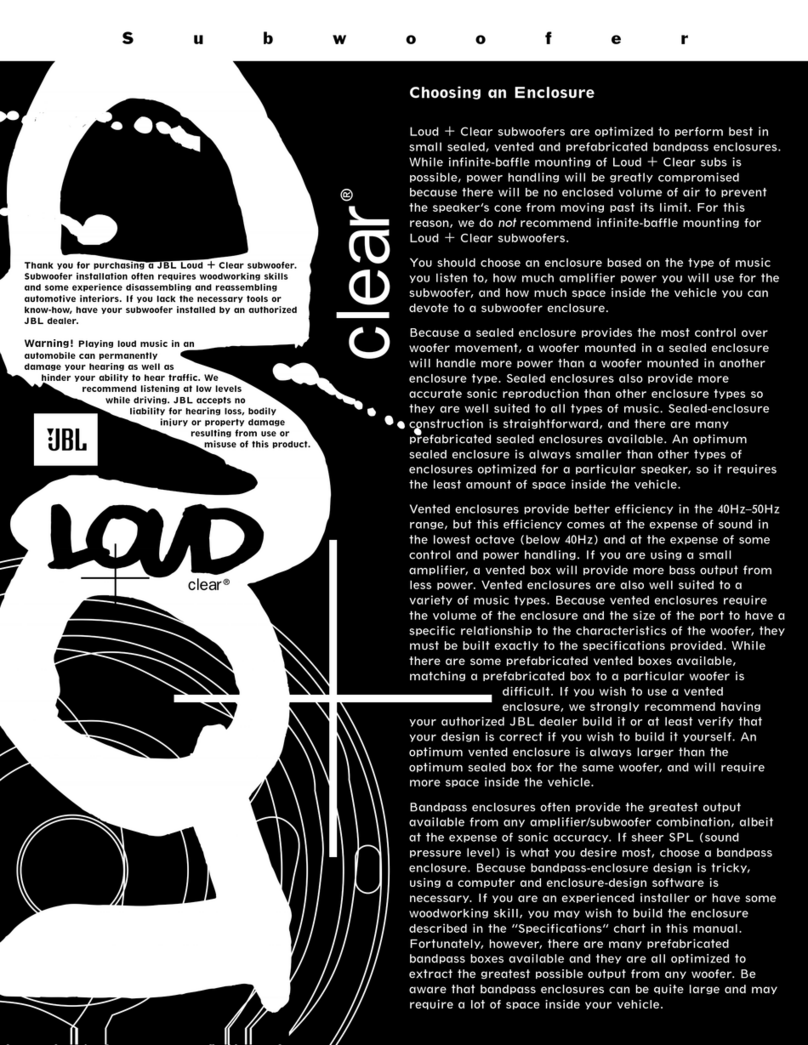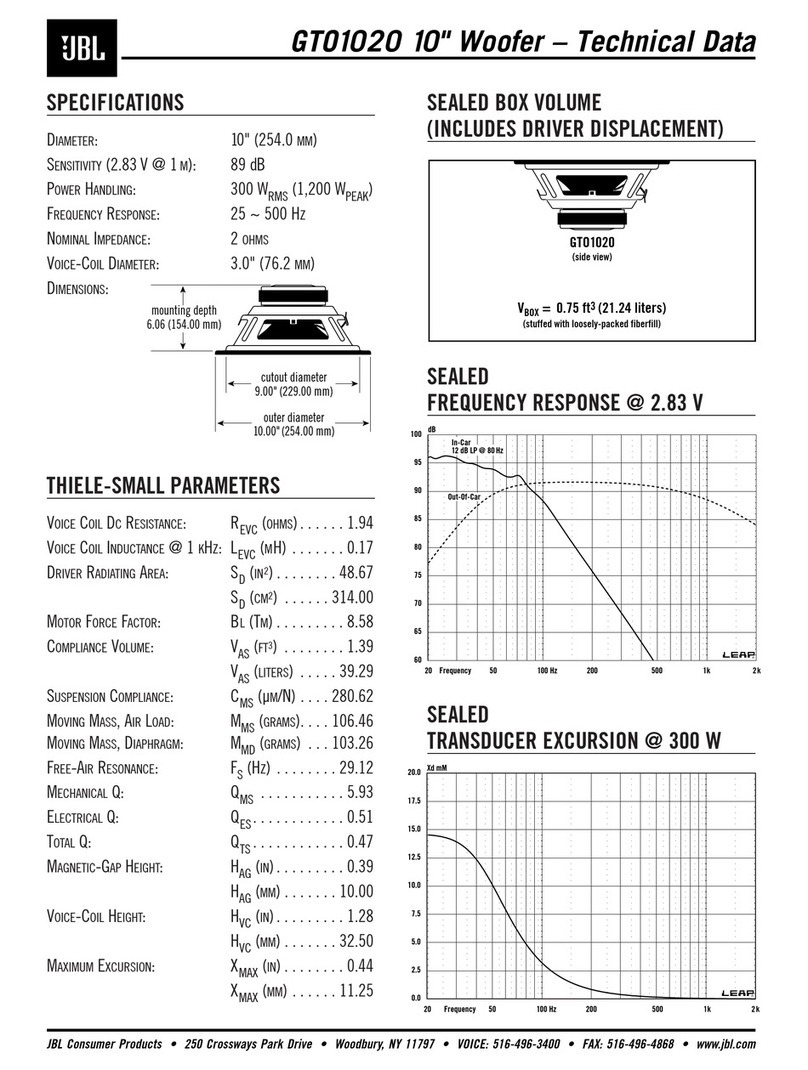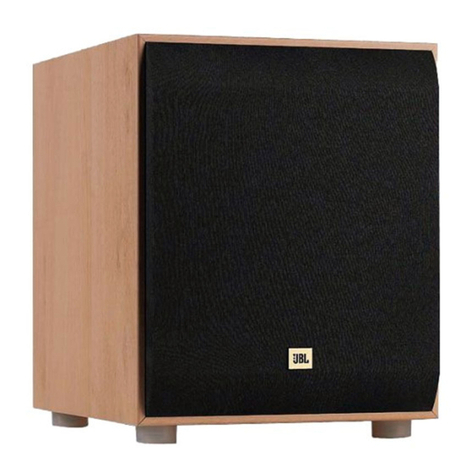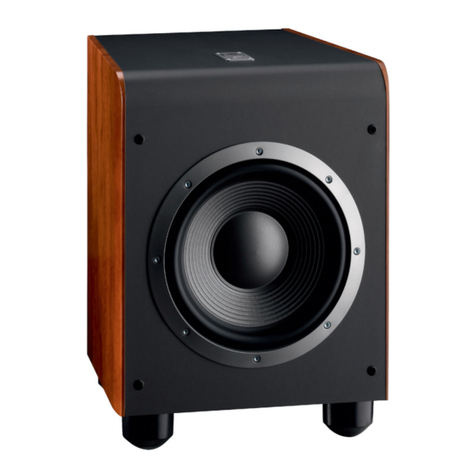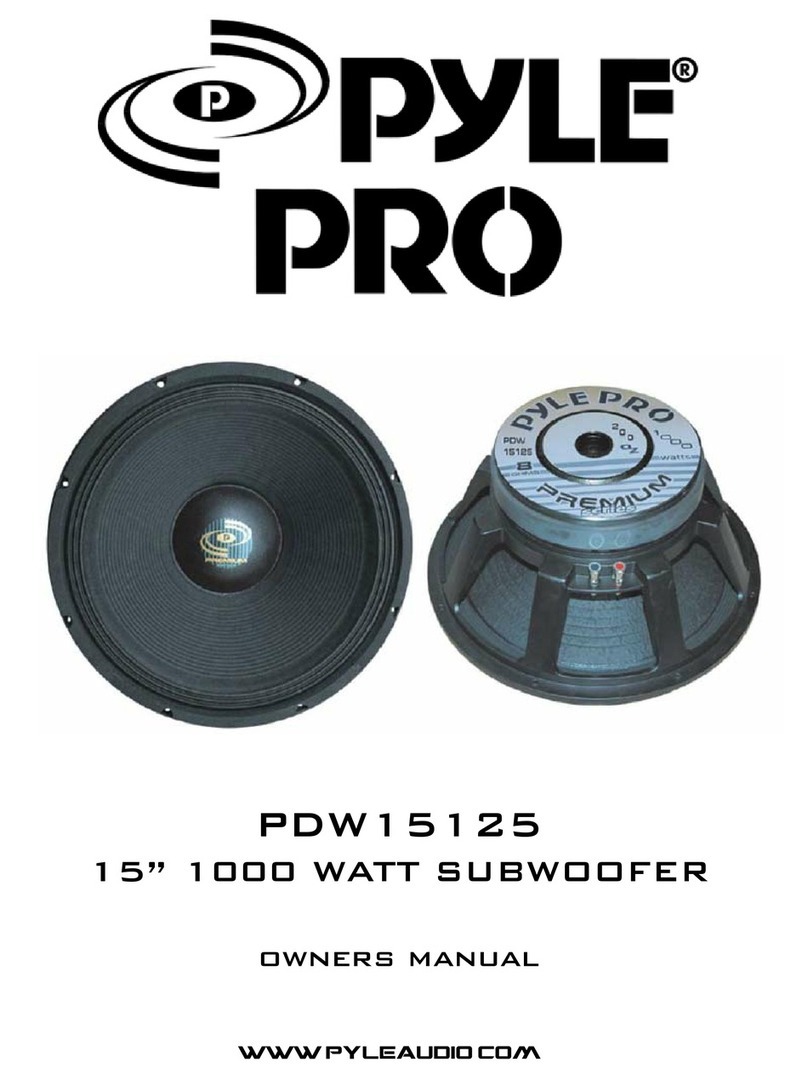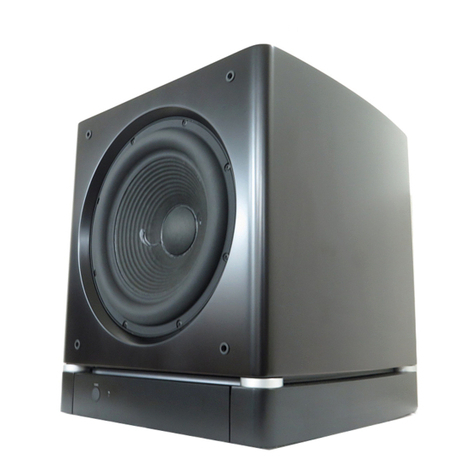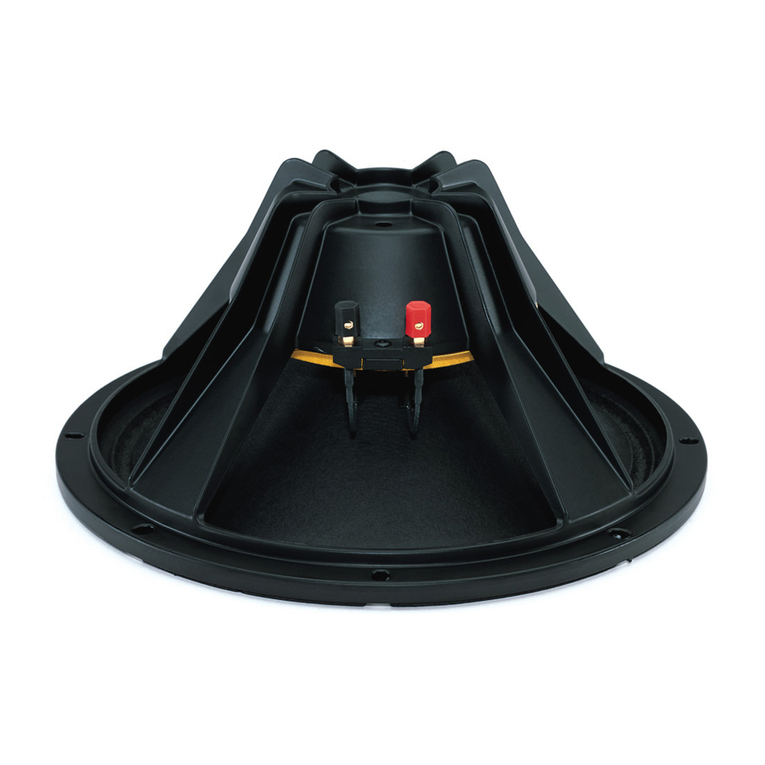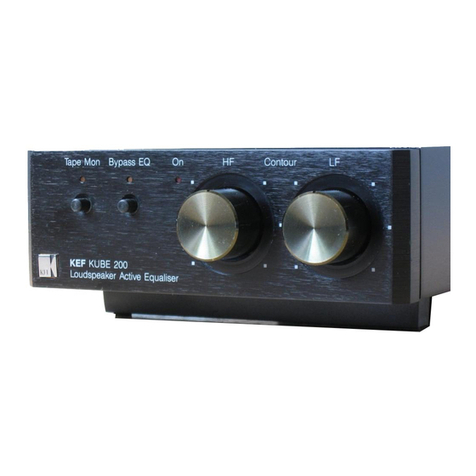6
The SS88IWS’s onboard cross-
over feeds the low-passed sig-
nal (2nd order at 100Hz) to the
SS88IWS subwoofers, and the
high-passed signal to the
speaker-level outputs for con-
nection to the satellite speakers.
NOTE: When using Connection
Method #1 with only one
SS88IWS, the shorting straps
must be removed.
If you are using two SS88IWS
sub
woofers, connect the left
speaker outputs on your
receiver/
amplifier to Input 1 on
one subwoofer (or the connec-
tions panel on its back box),
and the right speaker outputs
on your receiver/amplifier to
Input 1 on the second sub-
woofer (or the connections
panel on its back box). Then
connect Output 1 from the left-
channel subwoofer to the inputs
on your main left speaker, and
Output 1 from the right-channel
subwoofer to the inputs on your
main right speaker. When using
the SS88IWS in this mono
mode, you should not remove
the shorting straps.
Connection Method #2
Use this method when you are
using the SS88IWS with a dedi-
cated subwoofer amplifier.
Connect your main receiver/
processor’s line-level subwoofer
output to the line-level input
on your subwoofer amplifier.
Connect the speaker terminals
on your subwoofer amplifier to
either Input 1 or Input 2. If your
amplifier has stereo outputs,
you may connect one channel
to each of Inputs 1 and 2.
However, you must remove the
shorting straps when using
stereo mode. Alternatively, you
may connect each channel to
aseparate SS88IWS. When
using only one input on an indi-
vidual SS88IWS, you should
leave the shorting straps in
place.
NOTE: The built-in network on
the SS88IWS is a 2nd-order
low-
pass filter, crossed over at
100Hz. This filter is always
active. Although the subwoofer
or LFE output on your receiver/
processor
may already be
crossed over,the SS88IWS’s
network will not interfere with
the higher-order processing
that is occurring at the preamp
stage.
Using the SS88IWSBB
Back Box
Whichever connection method
you choose, if you are installing
the SS88IWSBB back box, you
will need to connect all of the
eight wires coming out of the
bottom of the back box to the
appropriate terminals on the
loudspeaker.The wires are
color-coded as follows:
INPUT 1 (–): Yellow with black
stripe
INPUT 1 (+): Solid yellow
INPUT 2 (–): White with black
stripe
INPUT 2 (+): Solid white
OUTPUT 1 (–): Orange with
black stripe
OUTPUT 1 (+): Solid orange
OUTPUT 2 (–): Green with black
stripe
OUTPUT 2 (+): Solid green
